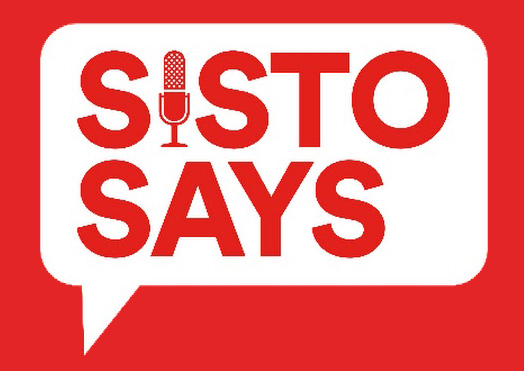Design 2147 CEO Sisto Martello recently had the opportunity to speak with Ashley Thompson DiNardo, Senior Principal at Cozen O’Connor Public Strategies, about the City of Yes to Affordable Housing Program and what it means for development in New York City.
Q. Tell us a little bit about the recent City Council vote on the City of Yes program. What does it look like now compared to when it was first introduced by Mayor Eric Adams?
A. At the beginning of his term, the Mayor outlined his three “City of Yes” proposals that collectively represented the most sweeping changes to the zoning code since 1961. There was the City of Yes for Carbon Neutrality that was passed to promote green energy and new technology. There was City of Yes for Economic Development to make it easier for small businesses to really thrive in the city and was adopted last June. And in December, November 21, the City Council voted to approve with modifications to the Mayor’s third proposal for the City of Yes for Affordable Housing. It was a wide-ranging proposal meant to eliminate barriers to developing new housing throughout the city. As Dan Garodnick, the Director of the Department of City Planning, put so well in his public comments, this proposal was really developed to build a little more housing everywhere.
Q. A lot of times, zoning changes are very specific to a very specific neighborhood. But this was more about being able to add maybe 50 units in a neighborhood and 50 in another neighborhood, versus having to add 1,000 units in one neighborhood. And 50 and 50 and 50 all over five boroughs adds up rather quickly, even though we do have higher density where there’s bigger volume. Some of the boroughs and the community boards are further out from the core and have lower density, and those are big changes for those neighborhoods. What were their reactions like?
A. Well, it was controversial. Any time there’s a bold, city-wide plan, you will have any number of opinions. We have over eight million New Yorkers and we all have at least one opinion. There were concerns from lower-density districts about how some of the aspects of City of Yes would impact their communities. For example, one of the proposals in the original plan would have done away with parking minimums. If you’re building in, say, the core of Manhattan, you don’t need to include parking in your development, but in a lot of other places you do. It’s incredibly expensive and it takes a lot of real estate that can’t be used for apartments. In areas close to a subway or a train, that required parking area is often underutilized, so the city proposed doing away with mandated minimums. But in districts where you do have higher levels of car ownership, communities were very apprehensive about bringing in additional residents and the impact on the availability of street parking and their quality of life.
The Council’s modifications to the proposal sought to find a middle ground – in neighborhoods with great access to public transit, parking requirements were eliminated, while they were reduced or maintained in other communities. These are difficult but necessary discussions to have a city, and this is a large part of what we do every day at Cozen Public Strategies: help our clients navigate complex conversations with government and community stakeholders. How do you bridge the gap between somewhat divergent interests to create a real win-win where we’re delivering housing in the midst of an affordability crisis and strengthening the fabric of communities.
Q. This is probably the largest major zoning change since the 1961 zoning resolution. That’s a long time. Things have changed in New York City in 63 years a little bit.
A. Change is difficult, but updating the zoning code was really necessary to help the city address the housing crisis. There’s been a lot of discussion about how many units of housing the City of Yes will actually create. It’s projected that with these changes, there will be an additional 80,000 units over the next 15 years in addition to what would already be built. That is significant, but it’s not a silver bullet.In addition to the changes to the zoning code, there was also a significant monetary contribution both from the city and the state. There’s a total of $5 billion that was agreed to: $4 billion from the city and an additional $1 billion dollars from the state. I think that’s a real recognition from every level of government, that we need more resources.
Q. The City of Yes wouldn’t have worked without developer support. If we could get the City of Yes going in this direction and combine it with 485x, developers will build.
A. The notable thing about the vote and this $5 billion package of investments that the city and state have committed to is that yes, it is about what are the incentives and programs that we need to build new housing – but there’s also, I believe, $2 billion in infrastructure improvements. You can’t build if you don’t have adequate utilities or sewage system or plan for schools and open space. Those are all critical components to communities and concerns that we certainly heard from community boards and others who were apprehensive of the proposal. The Council was successful in leveraging this citywide text change to address these broader concerns about development.
When you look at some of the neighborhood-wide rezonings that are in process now, those are the things that they’re talking about at the community level. If we’re going to change the zoning, how do we plan for other services? The other thing that it’s important to remember is that the City of Yes is about making it easier to build so that certain types of developments don’t have to go through a lengthy and very costly public approval process, because that hinders development of needed housing units. It doesn’t mean that tomorrow we’re going to have 80,000 additional units.
Q. There are also proposed zoning changes to Long Island City, Atlantic Avenue, the Garment Center, and Midtown South that are independent of the City of Yes. What are you hearing about those areas, and what does that ULURP process look like?
A. The City of Yes proposals were the umbrella changes to the city-wide zoning text. These neighborhood-specific plans are all moving on their own timelines. The Atlantic Avenue Mixed-Use Plan, AAMUP (pronounced “aim up”), is really being led by council member Crystal Hudson. She pushed the administration to take a new look at Atlantic Avenue, which I think is really prime for development. I think the reason that she and frankly the community board pushed the city to do a more comprehensive plan for Atlantic Avenue is because they were seeing all of these individual proposals to rezone sites and it’s difficult to have a holistic discussion about infrastructure upgrades or schools or open spaces on a site-by-site basis. That’s a conversation that really needs to be had at scale. So that is in ULURP right now; it is currently in front of the Borough President. Midtown South is expected to be certified into ULURP early this year. So that’s moving forward. Long Island City is still in the planning stages.
Q. Looking down the road several years, what do you think the City of Yes impact will be?
A. We probably won’t see impact right away, not in year one or year two. But these things add up. That’s exactly what we’ve seen with things like mandatory inclusionary housing. I think Director Garodnick put it well: some of this is about building that missing middle housing, for families who may not qualify for the lowest income units but can’t afford a market rate unit. We need make it affordable for families to stay in the city and continue to contribute to our economy and culture, and the zoning changes brought about by the City of Yes proposals will help make that happen.


